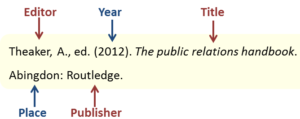Style Guides Harvard Format
Academic writing requires a meticulous approach to ensure clarity, professionalism, and consistency. We will explore the Style Guides Harvard Format, which is widely used in various academic disciplines. We will delve into the importance of style guides, provide an overview of Harvard format, discuss its components, and offer practical tips for using it effectively. By the end of this article, you will have a comprehensive understanding of the Harvard style and how to apply it to your academic writing.
When it comes to academic writing, adhering to specific style guidelines is essential. A style guide serves as a roadmap that helps writers maintain consistency and ensures that their work is formatted and cited correctly. Among the various style guides available, the Harvard format stands out as a popular choice due to its wide acceptance across academic fields.
Components of a Harvard Style Guide
To ensure proper formatting and organization in Harvard format, academic papers typically consist of the following components:
Title Page
The title page is the first page of your academic paper and should include the title of your work, your name, the name of your institution, and the date of submission. It sets the tone for your paper and provides important information about the content.
Abstract
The abstract is a concise summary of your paper, typically ranging from 150 to 250 words. It highlights the main objectives, methods, and findings of your research. The abstract allows readers to grasp the essence of your paper quickly and decide whether to continue reading.
Main Body
The main body of your paper contains the actual content of your research or analysis. It is divided into sections and subsections based on the logical flow of your arguments. Each section should have a clear heading to guide the reader and maintain coherence throughout the paper.
References
The references section provides a comprehensive list of all the sources you have cited in your paper. It includes the complete bibliographic details of each source, allowing readers to locate and verify the information you have used. Remember to follow the specific formatting guidelines for reference entries in Harvard format.
Appendices
If you have supplementary material that is relevant but not crucial to the main body of your paper, you can include it in the appendices. Appendices may contain tables, graphs, or additional data that support your findings or provide further explanation. Each appendix should be labeled and referenced within the main body of your paper.
General Formatting Guidelines
In Harvard format, academic papers are typically written in Times New Roman font, size 12, with double-spacing. Margins should be set at one inch on all sides. The title page, abstract, main body, and reference list should be organized following specific guidelines.
In-text Citations
In-text citations in Harvard format include the author’s last name and the year of publication within parentheses. The citation is usually placed after the referenced information or at the end of the sentence. For example:
According to Smith (2019), climate change is a pressing global issue.
If the author’s name is mentioned within the sentence, only the year needs to be included in the parentheses. For instance:
Smith (2019) argues that climate change is a pressing global issue.
Reference List
The reference list in Harvard format contains detailed information about the sources cited in the paper. Each entry follows a specific format, including the author’s name,
information. The reference list should be alphabetized by the author’s last name. Here’s an example of how a reference entry should be formatted:
Smith, J. (2019). The Impact of Climate Change. Journal of Environmental Studies, 42(3), 123-145.

Check on this Harvard referencing guide
Tips for Using Harvard Format Effectively
To make the most out of Harvard format in your academic writing, consider the following tips:
Consistency is Key
Maintain consistency throughout your paper by following the formatting and citation guidelines consistently. Consistency enhances readability and professionalism, making your paper more coherent and trustworthy.
Mastering In-text Citations
Pay close attention to in-text citations and ensure they are formatted correctly. Include the author’s last name and the year of publication, and place the citation at the appropriate location within your sentence or paragraph.
Organizing Your Reference List
Create a well-organized and alphabetized reference list at the end of your paper. Double-check each reference entry for accuracy and follow the specific formatting guidelines for different types of sources, such as books, journal articles, or websites.
Proofreading and Editing
Before submitting your paper, carefully proofread and edit it for grammar, punctuation, and spelling errors. Ensure that your paper flows smoothly and that your arguments are coherent and well-supported. Consider seeking feedback from peers or professors to improve the overall quality of your work.
Harvard referencing style examples
Here are a few examples of how to format different types of sources in Harvard referencing style:
-
Book with a Single Author: Last name, Initial(s). (Year). Title of Book. Place of Publication: Publisher.
Example: Smith, J. (2020). The Art of Writing. New York: ABC Publishing.
-
Journal Article: Last name, Initial(s). (Year). Title of article. Journal Name, Volume(Issue), Page numbers.
Example: Johnson, L. (2021). The Impact of Technology on Education. Journal of Educational Studies, 25(2), 120-135.
-
Website Article: Last name, Initial(s) or Organization. (Year). Title of article. Website Name. Retrieved from URL
Example: Brown, A. (2019). Tips for Effective Time Management. Time Management Strategies. Retrieved from URL
-
Chapter in an Edited Book: Last name, Initial(s). (Year). Title of chapter. In Editor(s) Initial(s). Last name (Eds.), Book Title (pp. Page numbers). Place of Publication: Publisher.
Example: Anderson, R. (2018). Environmental Conservation. In S. Johnson (Ed.), Environmental Studies (pp. 45-60). London: XYZ Publications.
-
Newspaper Article: Last name, Initial(s). (Year, Month Day). Title of article. Newspaper Name, Page numbers.
Example: Parker, M. (2022, January 15). Climate Change and Its Impact on Coastal Areas. The Daily News, pp. A1-A2.
Remember to adapt the examples to the specific details of the source you are referencing, such as the author’s name, publication date, title, and page numbers. Additionally, ensure that your reference list is organized alphabetically by the author’s last name.
Please note that the formatting may vary slightly depending on the specific guidelines provided by your academic institution or the style guide you are following.
Common Mistakes to Avoid
When using Harvard format, it’s important to be aware of common mistakes and avoid them. Some common errors include inconsistent formatting, improper in-text citations, inaccurate reference entries, and overlooking proofreading and editing. By being vigilant and double-checking your work, you can minimize these mistakes and present a polished academic paper.
Conclusion
The Style Guides Harvard Format is an important tool for academic writers. By following the specific guidelines outlined in this format, you can ensure consistency, professionalism, and credibility in your academic writing. Remember to pay attention to general formatting, in-text citations, reference list entries, and overall organization. By mastering Harvard format, you can enhance the quality and impact of your academic papers. Incase you would like to study on Turabian.
Frequently Asked Questions (FAQs)
-
Q: Can I use Harvard format in all academic disciplines? A: While Harvard format is widely accepted in social sciences, business, and humanities disciplines, it’s important to consult your professor or department guidelines to determine the preferred style for your specific field of study.
-
Q: Do I need to include page numbers in Harvard format? A: In general, page numbers are not required in in-text citations for Harvard format. However, some specific cases or academic requirements may necessitate the inclusion of page numbers, so it’s best to consult your style guide or professor for clarification.
-
Q: How should I format long quotations in Harvard format? A: For long quotations (typically more than four lines), you should present them in a separate indented paragraph, without quotation marks. The indentation can vary, but commonly it is about one inch from the left margin. Always check your style guide for specific formatting instructions.
-
Q: Can I use footnotes or endnotes in Harvard format? A: Harvard format primarily relies on in-text citations and a reference list. Footnotes and endnotes are not commonly used in this style. However, some exceptions may apply, such as providing additional explanatory notes or copyright permissions. Consult your style guide or professor for guidance.
-
Q: Is there any specific software or tool to help me generate Harvard format citations? A: Yes, there are various citation management tools and software available, such as Zotero, Mendeley, and EndNote, that can assist you in generating citations and managing your references in Harvard format. These tools can save time and ensure accuracy, but it’s essential to review and double-check the generated citations for any errors.









